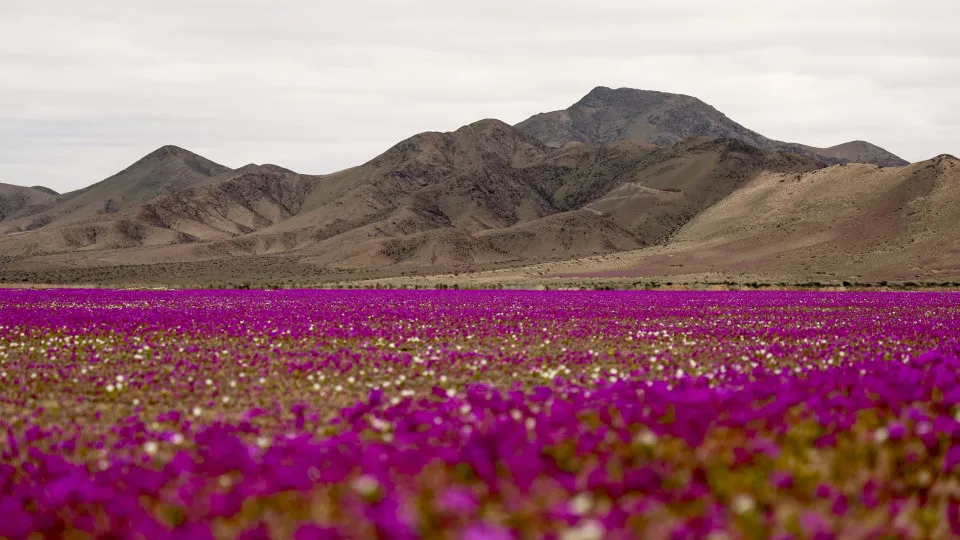A rare bloom has transformed Chile’s Atacama Desert into a vast carpet of fuchsia and purple wildflowers. Known as the driest, highest, and 22nd largest desert in the world, the Atacama is one of the most inhospitable places on Earth, making this burst of color all the more remarkable.
The spectacular display follows months of heavier-than-average rainfall across the desert’s foothills and highlands, marking one of the wettest seasons in recent memory. Scientists say more than 200 native plant species remain hidden beneath the Atacama’s soil, waiting for the rare combination of moisture and temperature to spark life. This year, rainfall carried from both the Amazon basin and the Pacific coast tipped the balance, triggering an explosion of color that has drawn thousands of visitors to Chile’s northern Copiapó region.
Indeed, when people imagine a desert, they tend to picture endless stretches of sand. But in reality, they are among the most diverse and fascinating ecosystems on the planet. By definition, a desert is any vast place on Earth where there is a scarcity of precipitation.
These arid environments exist in many forms. But despite their inhospitable reputations, deserts are home to remarkable creatures and some of the most dramatic landscapes. Interestingly, Europe is the only continent on the planet that does not have any big desert, although it does feature small desert-like areas.
So, which parts of our world are home to the biggest deserts? And why is the climate in these areas so dry? Click through this gallery to find out.



